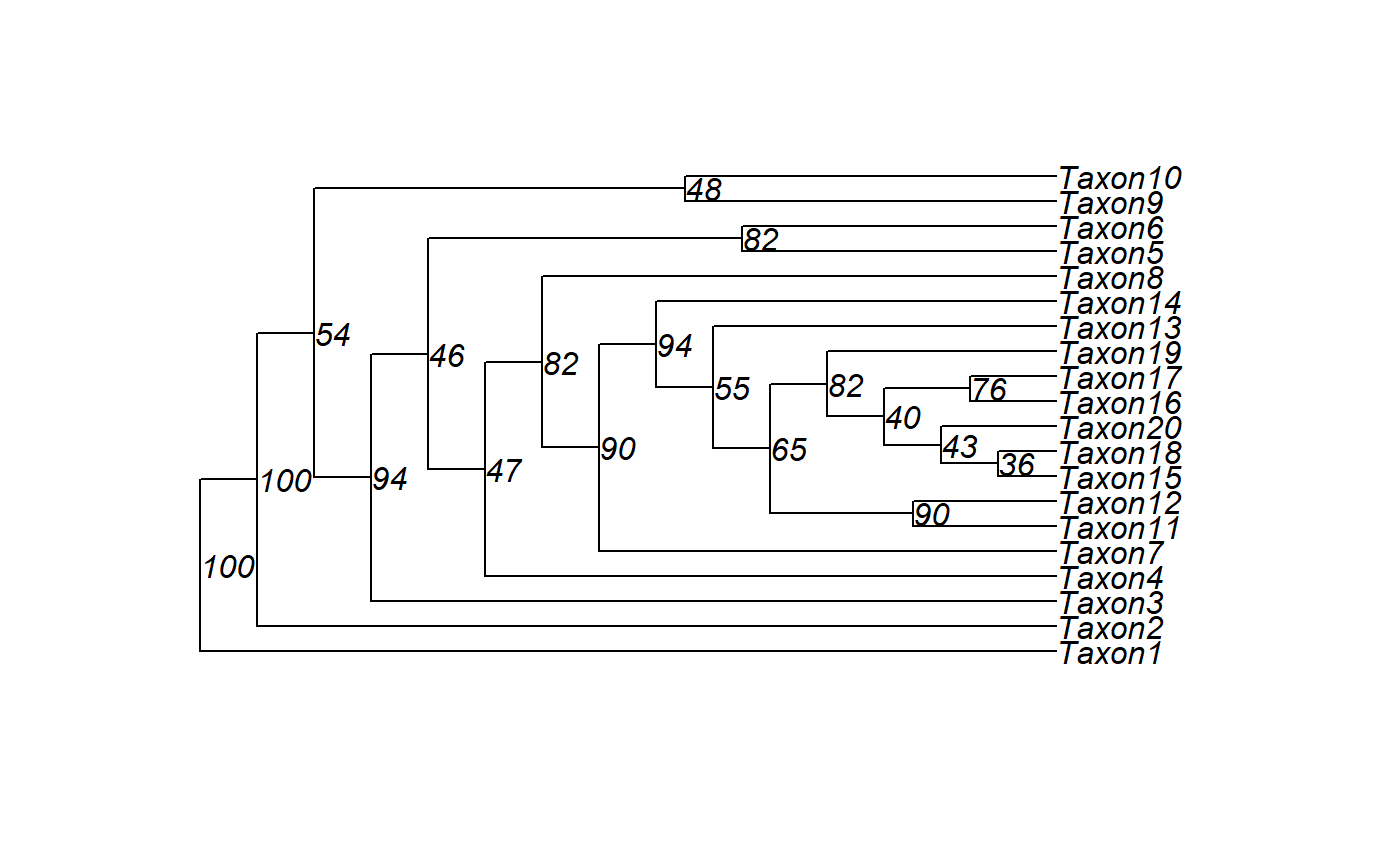Read Tree File in Binary Format
read_binary_trees.RdThis function reads a file containing one or more trees in binary format.
read_binary_trees(file, tree.names = NULL, keep.multi = FALSE)
Arguments
| file | A file name. |
|---|---|
| tree.names | A vector of mode character containing names for the trees that are read from the file;
if |
| keep.multi | If |
Value
An object of class "phylo" or "multiPhylo", compatible with the ape
package.
In addition to the elements described in the documentation for the read.tree
function of the ape package, a "phylo" object produced by this function
will also have the following components:
tip.attributesA named list of attributes for the tips of the tree. Each element of this list is a vector of mode character or numeric (depending on the attribute).
node.attributesA named list of attributes for the internal nodes of the tree. Each element of this list is a vector of mode character or numeric (depending on the attribute).
Details
This function reads the whole file in memory at once. If you wish to process the file tree-by-tree, you
should use the read_one_binary_tree function.
Node attributes (e.g. support values, rates, ages...) are parsed by this function and returned in the
tip.attributes and node.attributes elements of the returned "phylo" objects.
Attribute names may appear in any kind of casing (e.g. Name, name or NAME), but they
should be treated using case-insensitive comparisons.
If the file has an invalid trailer (e.g. because it is incomplete), the function will print a warning and attempt anyways to extract as many trees as possible.
References
https://github.com/arklumpus/TreeNode/blob/master/BinaryTree.md
See also
read_one_binary_tree, ape, read.tree
Other functions to read trees:
read_nwka_nexus(),
read_nwka_tree(),
read_one_binary_tree()
Examples
# Tree file (replace with your own) treeFile <- system.file("extdata", "oneTree.tbi", package="TreeNode") # Read the tree file tree <- read_binary_trees(treeFile) # Use support values as node labels tree$node.label = tree$node.attributes$Support # Plot the tree with support values at the nodes ape::plot.phylo(tree, show.node.label = TRUE)
